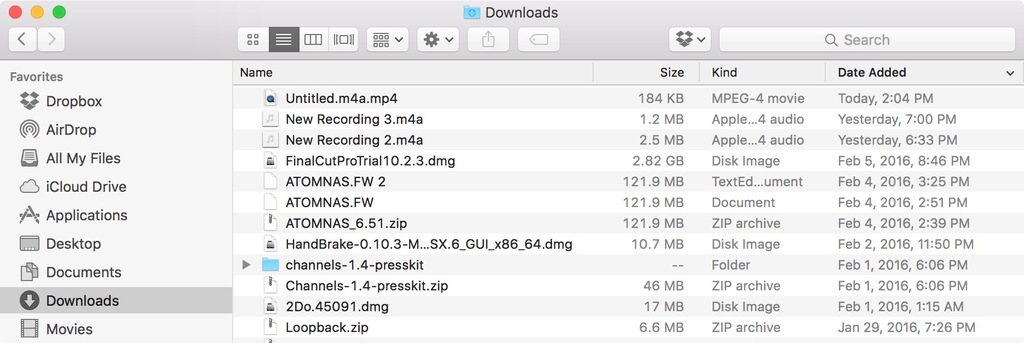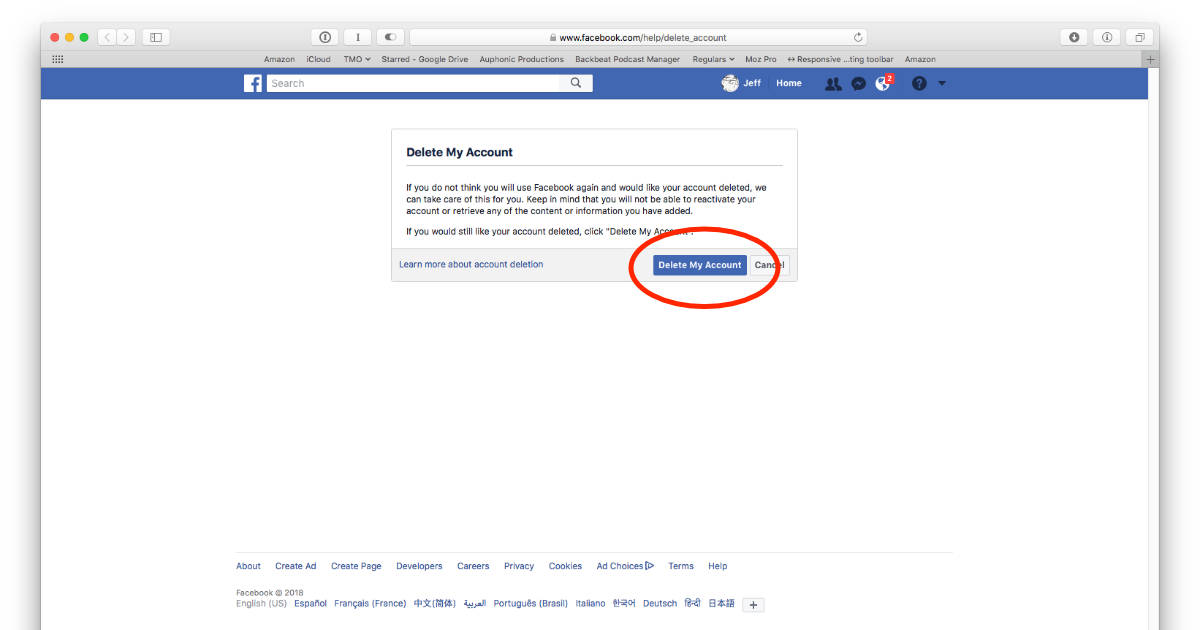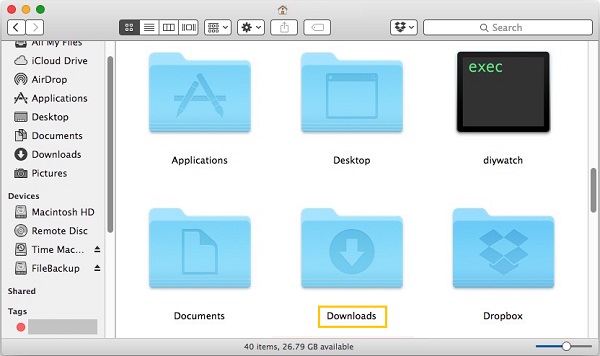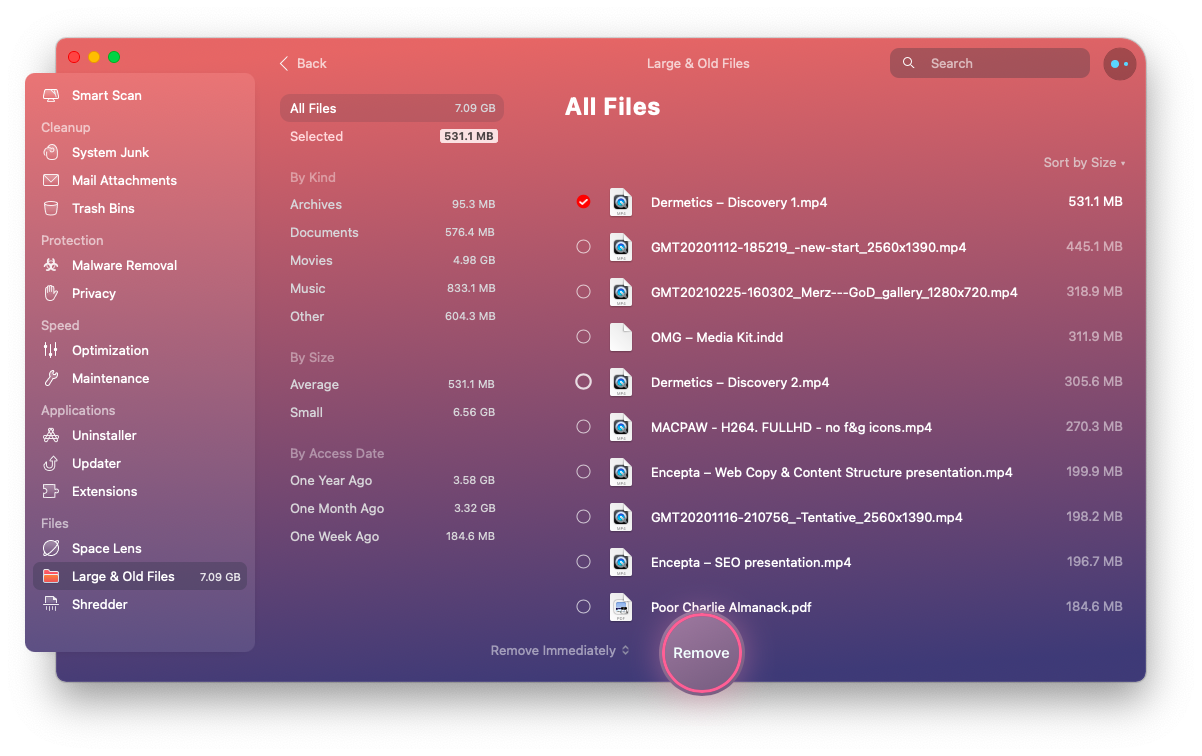How To Delete All Downloads On Mac
System cleanup in one click
Jan 11, 2021 One wrong move and you can really screw things up on your Mac – and all you wanted to do was remove an app! Instead, download CleanMyMac X from Setapp. It provides you all the same root access as Terminal for deleting apps, but takes care of the heavy lifting so you can point and click your way to removing apps on your Mac. Delete Downloads On Mac Directly. Well as you know after reading so far that there are two ways which we can use to Delete Downloads On Mac. So I think now we should move to the steps of our first way in order to Delete Downloads On Mac. So all you need to do form now is just have patience and concentration on each and every step which I am.
It’s practically impossible to go through a day of working on Mac and not download anything: coworkers send us files for review, friends send us new funny memes, or we download new app installers ourselves.
Most of the files we download we only need to see or use once, but we rarely have the discipline to delete them right then and there. Over time, this leads to our hard drives overflowing with files and folders we don’t actually want, straining our system’s resources and pushing us to spend to upgrade storage.
No more! Today, we’ll show you how to clear downloads on Mac in just a few minutes, potentially freeing up gigabytes of space and giving a new boost to your Mac.

Get Setapp to get rid of downloads
Setapp gives you a combo of the best cleanup app, CleanMyMac X, and a powerful duplicate removal app, Gemini.
How to Delete Downloads on Mac
Nearly all files we download to our Macs end up either on your Desktop or in the Downloads folder. While the former is always visible and thus much easier to take care of, the latter quickly turns into the never-ending stream of files.
The first step to learning how to clear downloads on Mac is to find where the Downloads folder is actually located. By default, you can click on the Finder icon in your Dock and then select Downloads from the sidebar, you can choose Downloads from the Finder’s Go menu bar, or you can use the Option + ⌘ + L shortcut.
If you have hundreds or even thousands of files in the Downloads folder, deleting all of them (⌘ + A and Delete) might be risky — what if there’s something you might need? At the same time, going through all files one by one could take hours.
A good solution here is to group all files in the folder by size, so that the heaviest items will automatically be displayed at the top and would be easy to scan through and delete, getting you 80% of results with 20% of the effort.
To group files by size, right-click at the white space within a folder and select Group By ➙ Size. Then delete all the heavy offenders either with ⌘ + Delete or right-click ➙ Move to Trash.
How to find and delete hidden download folders
How To Delete Multiple Downloaded Podcasts On Mac
Most of the time your online files end up in the Downloads folder, which we covered above. However, if you’re frequently using various apps where you download files, they might as well end up in some proprietary folders in the heart of your Mac.
We’ve all been using Zoom, for example, in the past year. We also record a lot of conversations to be able to reference them later. Where those conversations get downloaded, though, might be a mystery to you.
To check on where Zoom stores all downloads, open up Preferences (⌘ + ,) and select Recording. Then click Open next to the “Store my recordings at:” and delete all unnecessary files within that folder. Finally use the dropdown to set that folders to regular Downloads.
Repeat the steps with every app from which you download files.
How to get rid of duplicate files
What happens more often than we realize is that we download a file from somewhere, use it once, and then a few days later forget where it is and download it again. This results in the proliferation of duplicates that serve no useful purpose at all. Deleting them is a no-brainer way to increase the amount of free space on your Mac. But how do you go about it?
Gemini is one of the most popular duplicate removers in the world. If you haven’t been removing duplicates regularly up until now, this app can save you gigabytes of space in seconds. Gemini is able to scan any folder and find the same files across images, video, audio, and more, even if they have different names. The app works for similar files as well, and Gemini preselects everything that’s safe to delete automatically.
Here’s how to use Gemini to delete duplicate files:
- Launch Gemini
- Click the plus icon
- Select Home ➙ Choose
- Click Scan for Duplicates
- Click Smart Cleanup
How To Uninstall Software On Mac

How to clear downloads on Mac overall
Your Mac’s unused files and folders don’t stop at Downloads. Over the years, you might’ve accumulated so much more that you just don’t notice every day.
Luckily, we can reuse the trick described above for the Downloads folder to find unneeded files across your Mac:
- Open any Finder window
- Search for a . (dot), which is present in any file name
- Switch the search to This Mac
- Right-click and pick Sort By ➙ Size
- Scan the top files and delete the ones you don’t need
This method is still a bit of a hack and while it tells you the size of the files it doesn’t tell you how often you’ve used them. For better results, you need a specialized app.
CleanMyMac X is a very powerful Mac optimizer that’s able to clean and speed up your Mac with just a few clicks. You can, for example, scan your Mac for malware, quit heavy tasks, update and uninstall apps, and more. One of CleanMyMac’s most underused features is called Large & Old Files, which scans all of your Mac for things that take up space and that you’re not using.
To find Large and Old Files with CleanMyMac X:
- Launch CleanMyMac X
- Navigate to the Large & Old Files tab
- Click Scan
- Check the files you don’t need
- Click Remove
How to remove downloads from Mac browsers
Tracking downloaded files through browsers can be a useful way to find the files you don’t need anymore. Browsers themselves don’t keep your files — they just provide a list of recently downloaded items.
After a heavy purge, however, it’s useful to clean up the list of downloads in your browser as well, so you can track everything from scratch.
To remove downloads in Safari:
- Click the Downloads icon in the top bar
- Select Clear
To delete downloads in Firefox:
- Go to Tools ➙ Downloads (⌘ + J)
- Click Clear Downloads

To clear downloads in Google Chrome:
- Go to Window ➙ Downloads (Shift + ⌘ + J)
- Click the three-dot menu and pick “Clear all”
You can also make all these actions effortless with CleanMyMac X, which has a way to clear all history and downloads from all browsers at once:
- Launch CleanMyMac X
- Navigate to the Privacy tab
- Go to each of your browsers and check Downloads History
- Click Remove
As you can see, when you know how to delete downloads on Mac, it takes just a few minutes, especially if you use apps like Gemini and CleanMyMac X.
Best of all, Gemini and CleanMyMac X are both available to you absolutely free for seven days through the trial of Setapp, a platform with more than 200 Mac apps that will supercharge your productivity, from unzipping archives with BetterZip to getting the best sound out of your speakers with Boom 3D. Try every Setapp app today at no cost and be amazed how quickly your life can change for the better.

Sep 14, 2021 • Filed to: Recover Files • Proven solutions
There are several times when things we have downloaded are too embarrassing to have or just no longer of any use, these unwanted files take up valuable space and thus people jump towards deleting these downloads for good.
If in the past you have had trouble removing the things that you have downloaded from your device, then we have come here to your rescue. Here are 4 easy solutions that can help you delete downloaded files on Windows.
How to delete downloaded files on Windows
Let's face it, most of us use Windows at home and in office. It is one of the easiest operating systems to work on. But if you have been having issues with deleting items or files on Windows, here is a step by step guide to making sure that you can get rid of those files and items forever.
Step 1. Get to your downloaded items first!
First thing first, you need to go to the folder that stores your downloads. That is quite easy to access, all you have to do is press the button with the windows symbol on it along with the button marked 'E'.
Once you are in the folder, you need to search for the item or file that you want to delete.
By default, the files that are downloaded are moved to the folder marked as 'Downloads'. But this is not true in every case, sometimes, the users can place the files in other folders also. In that case, you need to locate the files using the search programs option.
Step 2. Delete selected files.
The next step is fairly simple, you can either drag the files that you want to delete to the recycle bin or you can right-click on the file and select the Delete option.
How to delete downloaded files on Mac
Step 1. Access the very folder that stores your downloaded files!
The folder that stores the downloaded files by default can be accessed in two ways, you can use any you find more fitting and convenient.
1) Access the download folder via the Dock. You can simply click on your desktop, then press the tab marked 'Go' and then move towards 'Downloads'.
2) Access the folder containing the downloaded files from the sidebar using the Finder Window.
But if you have changed the location of the files that you have downloaded then you need to search for the file, in general, using the name of the file to get hold of it.
Step 2. Download the disk image file also
An important thing to remember is that on MAC, the programs are downloaded as Disk Images, even after you have downloaded the programs these disk images remain on the computer, taking up huge amounts of space. So, when it comes to programs, uninstalling them is only half the game. Uninstalling the program should be accompanied by removing the Disk Images also. This will free a greater amount of space.
Step 3. Take the files that you want to delete to the trash can.

Can You Delete All Downloads On Mac
Once you have located the file, you can drag the file to the trash can or just right click on the file and then press delete.
How to delete downloaded files on Android
Step 1. Download a file application manager.
There is a huge range of file application managers available online. These application managers can easily be downloaded and then operated on devices that run on android.
Some of the most widely used application managers are:
How To Delete All Downloads On Mac At Once
1) ES File Explorer
2) Astro File Manager
Step 2. Next, locate the files using any of the managers.
How To Uninstall Downloads On Mac
Once you have installed the application manager, (for the sake of understanding lets explore with the ES File Explorer), you need to open it. A screen will appear having all the files on the phone, you need to locate the folder marked downloads. Once you open the download folder you will be able to view all the files that you have downloaded on to your mobile device
Step 3. Just press delete!
Once you are in the folder and you have located the file that you want to delete, all you have to do is press delete.
How to delete downloaded files on iPhone/iPad
The first step is to locate the files that you want to delete. In iOS you want don't get to see all of your downloads in one location. You have to access the file that you want to delete using the application that is used to handle them. Once you have the file to view, all you have to do is swipe the file and the delete option will become visible. Press the delete option and that will be the end of that file for good.
Problems when deleting downloaded files and their solutions
a) At times the files cannot be deleted because they are in use, a pop like the one shown below appears. Fret, not just close the file and then repeat step number 2 just to delete the files again.
This can be a cause of great annoyance especially if you want to delete all the files quickly. One has to go back and check where exactly the file is open and then force it shut.
b) People cannot find the items that they want to delete.
IOS is a very complicated system. Unlike windows, it is not so easy to locate the files on this system as it is to locate them on windows. To get around this issue, people can simply have their phone jailbroken. Once its jailbroken you can then install application managers and manipulate files the same way they are manipulated on android systems.
c) At times iOS won't let you delete your songs.
This is one issue that can be resolved by simply deleting the song from the iTunes folder. Once that song is deleted from there it won't appear on your mobile iOS device either.
If you lost data on your computer, unfortunately, don't worry! You still have the chance to get lost data back. To recover files from the computer, you can have tried the following tool.
Your Safe & Reliable Deleted Files Recovery Software
- Recover lost or deleted files, photos, audio, music, emails from any storage device effectively, safely and completely.
- Supports data recovery from recycle bin, hard drive, memory card, flash drive, digital camera, and camcorders.
- Supports to recover data for sudden deletion, formatting, hard drive corruption, virus attack, system crash under different situations.
Recover & Repair Files
How To Delete All Downloads On Mac
- Recover Document Files
- Repair Document Files
- Recover & Repair More
- Clear & Delete File